Think fly fishing for trout only happens in pristine north country waters surrounded by pines and mountains? Think again.
Casting a fly on one of the world’s top trout streams while often within sight of the skyscrapers of a major city is a unique experience, and that’s what you can do within the city limits of Canada’s fourth-largest city of Calgary, Alberta.
A Must-Fish River
Calgary is home to the Bow River, one that’s long been on my must-fish list and should be on yours too if you’re a fly angler, or if you’ve always wanted to learn. The Bow has an estimated 2,500 catchable trout—that means browns and rainbows averaging 17 inches or better—per mile, in the waters near and through the city.
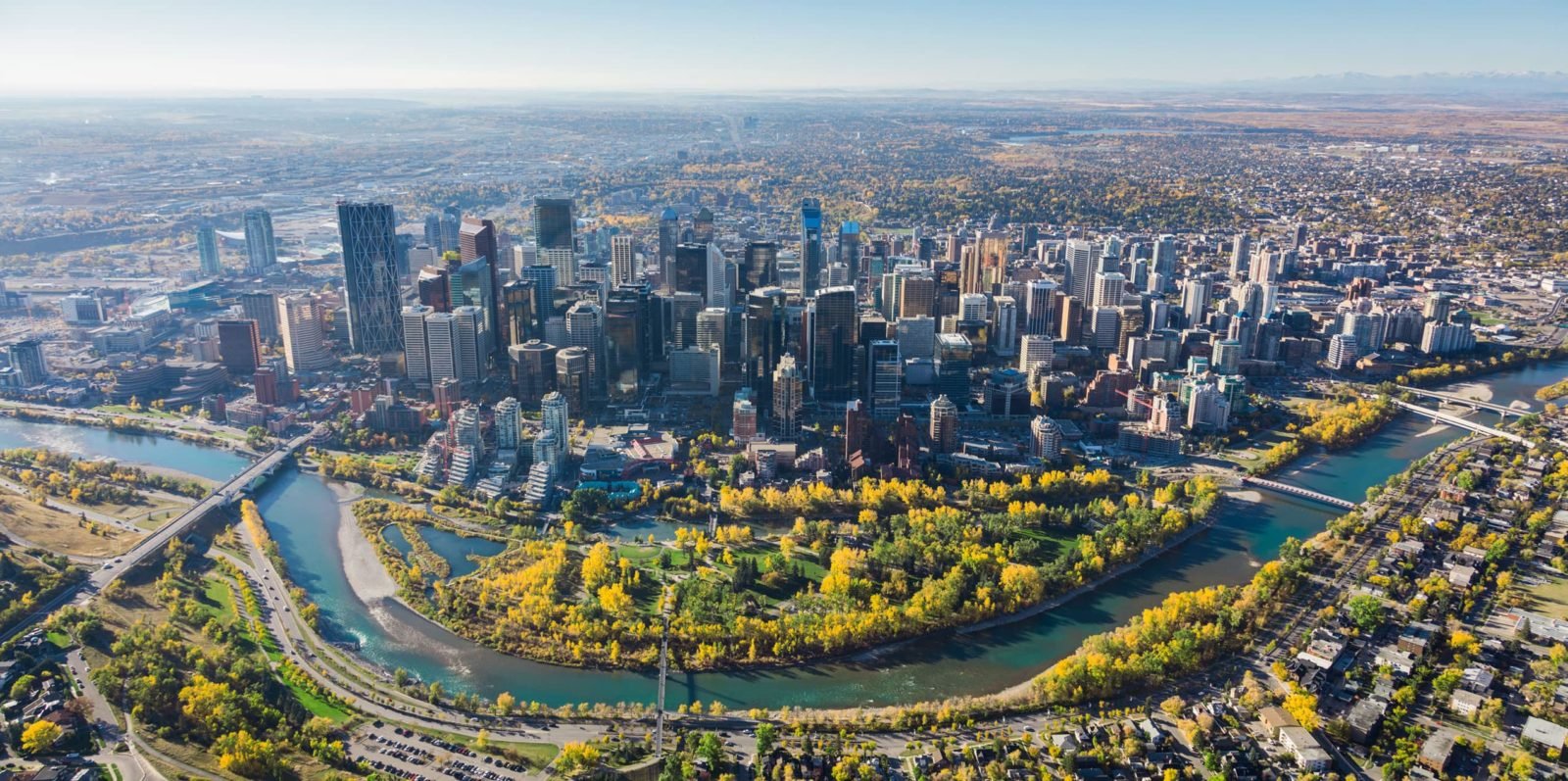
I first read about the Bow in a story written by my former boss at Michigan Living Magazine a few decades ago, and it’s been on my mind ever since. There are other reaches of this river offering great fishing all the way to Banff National Park, where the Bow begins. But because I rank it a classic big western river, meaning it’s fast (with an average speed of 5-7 mph and flow rate of 150 cubic meters/second) and rocky, it is best fished from a boat in most areas. And seeing as there are at least eight fly shops within this city of 1.2 million, that may tell you a bit about where to go – one of the best areas for fishing “country trout” is in the city. When we decided to turn our Unity Murphy Bed west from Michigan for a nine-week trip through the Canadian Rockies, making a reservation with one of those fly shops was one of the first calls I made.
All of the fly shops in Calgary have high ratings, so you won’t go wrong with any. We chose Out Fly Fishing Outfitters, a great little shop tucked into a small shopping mall on the city’s southwest side, but still only about a mile from the river. It’s a little weird pulling into a city shopping mall to go trout fishing, but that’s what you do when you fish this reach of the river.
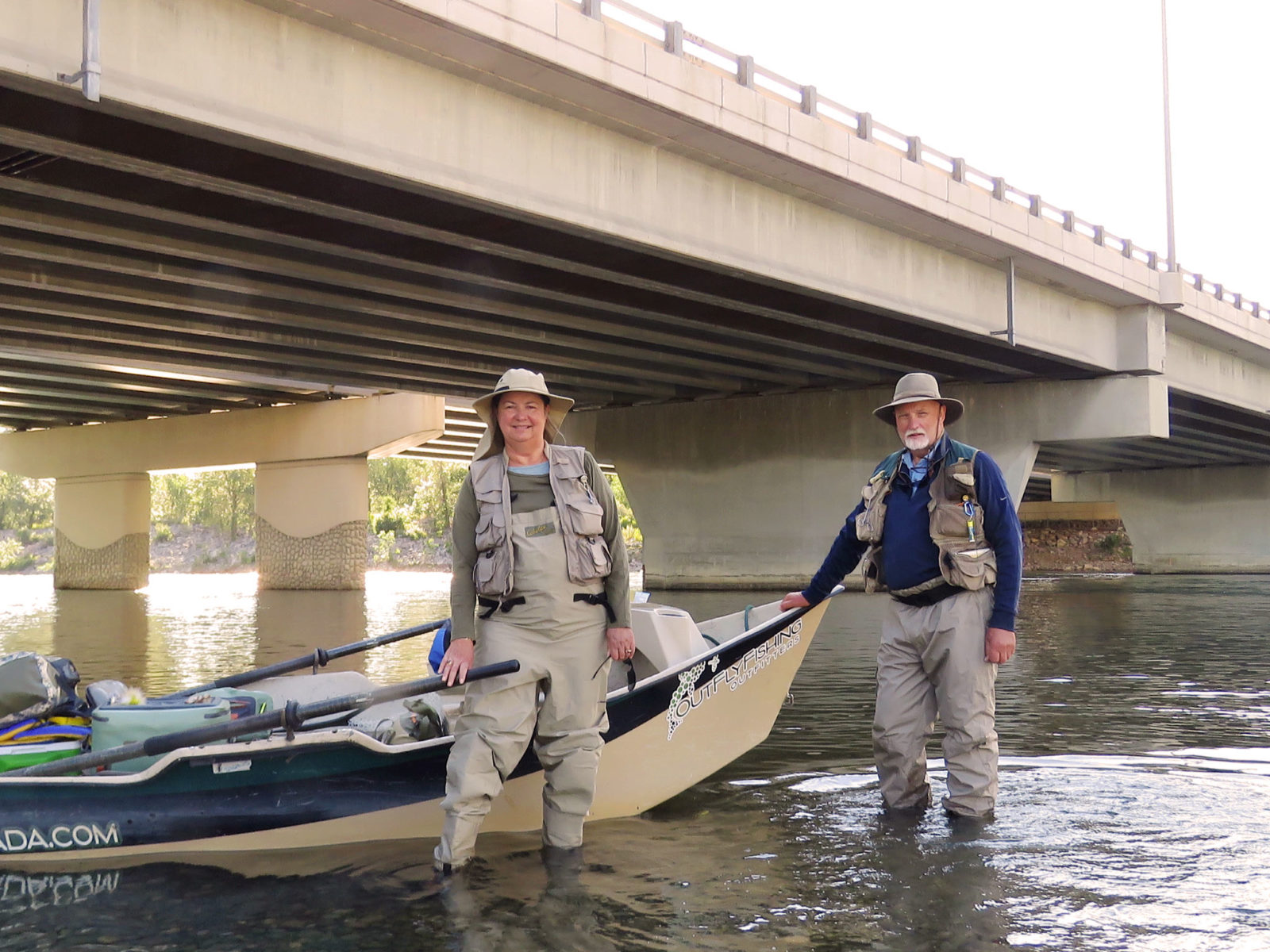
We checked into the shop the day prior to our float and found out we’d be taking what’s called the “city float,” running from Glenmore Bridge to Fish Creek. Much of the float would be within or near the Calgary city limits, and most of what we’d be fishing are called “tailwater,” meaning below one of a series of dams that help slow the Bow’s flow, and cool and oxygenate the water. Those dams didn’t help much in 2013 when record rains upstream blew out the river and flooded parts of the city. It took a few years for the Bow to reclaim its blue ribbon status, and for guides like Red Deer’s Troy Langelaar, who piloted us on our trip, to re-learn where the fish were, but the river is now back to its trout-rich self, as our trip last July with Troy proved.
“It made you learn the river again,” Troy said. “With the flood, the fish spread out. The fishing last year was really good. It’s definitely been improving every year.”
Our Day on the Bow
The morning of our float, we met Troy in the parking lot outside the shop. We backed our Unity LTV into a mall parking space (a big advantage for this vehicle), gathered our gear and secured it in Troy’s boat, and jumped into his truck for the short ride to our launch site. On the way, Troy told us we’d be using his fly rods for the trip. The Bow here is big and we’d need rods with more backbone than the ones we had brought, both in order to cast the distances needed to reach fish and to land the resident trout, many of which are pounds h-u-g-e.
After backing his drift boat in, we jumped aboard. With Troy rowing amidships, I settled in the back, being more experienced and left-handed, while right-handed Denise was in the bow. That allowed Troy to first observe Denise, who was less experienced in casting. He soon stopped at a gravel bar, and while I walked upstream to fish a riffle, Troy coached Denise on the finer art of throwing a size 6 imitation grasshopper AND an imitation “Reeses Pieces” worm together, a setup called a hopper/dropper. For those who don’t know, that’s big for a fly. With the added size increasing air resistance, it takes a bit more practice to learn.
Meanwhile, Troy outfitted me with a grasshopper fly. Hoppers are a mid-summer treat for big fish. They love to fin in the slower current near shore, waiting to slurp a wind-blown hopper struggling in the swirls to get back to shore. It’s often the best way to hook big fish on this or any other river from July through September, but you must place your fly cast as close to the bank as possible. That means inches, not a foot or even a half-foot, away for the most realistic presentation.
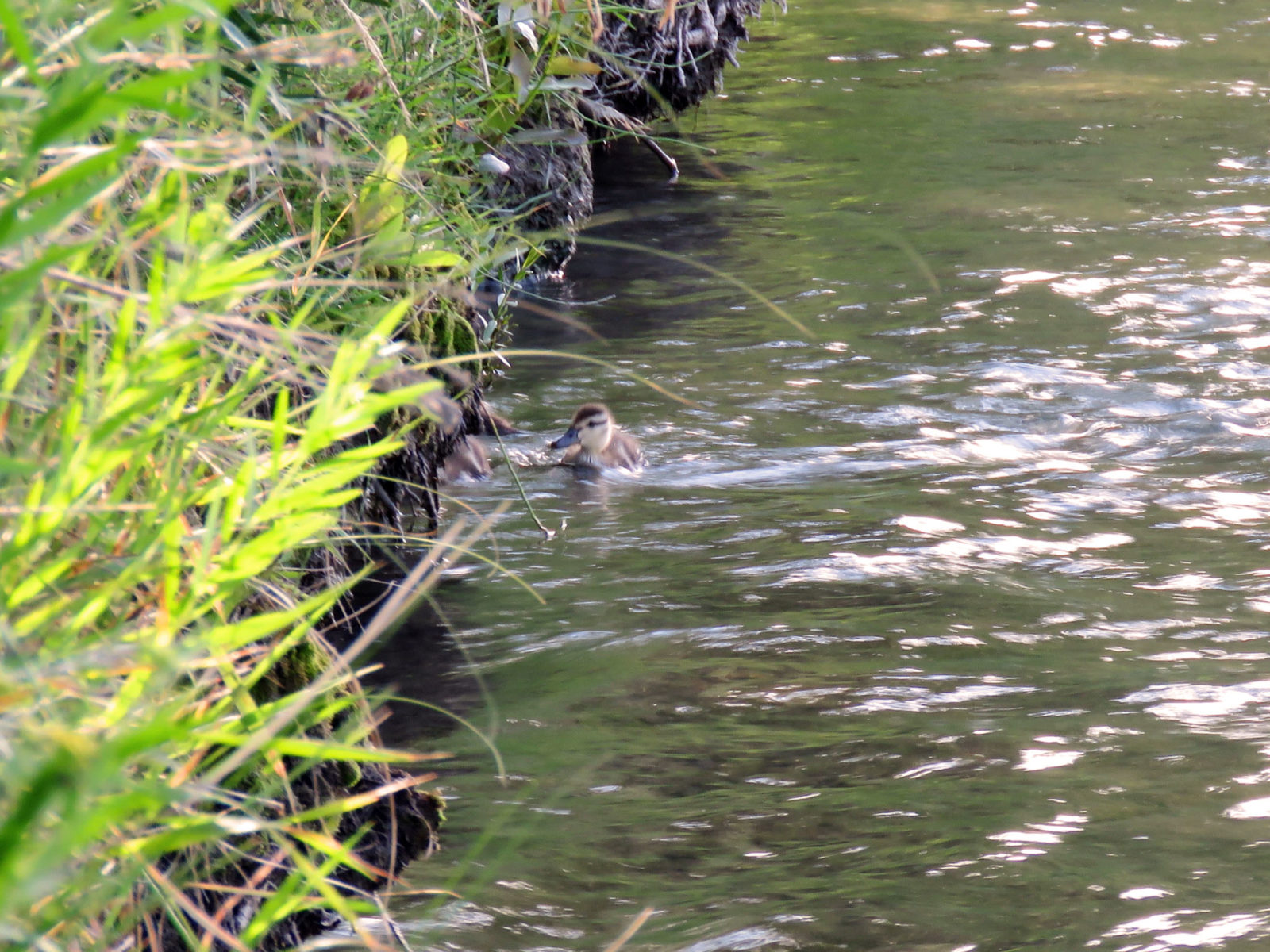
After that quick lesson, we were off again down the river, me laying that hopper as close to shore as possible, and Denise flinging that double-tipped offering to wherever Troy said to cast, all the time coaching us to constantly “mend” our lines, or move the loop that drags in the fast current.
We quickly became experts at flipping the rod tip to mend that line. Mending your line upstream with a simple wrist flip keeps a fly floating as naturally as possible, whereas drag creates an unnatural look to an artificial fly that makes just about any fish shy away. They’re looking for food, but it has to look natural or you’ll just be beating the water to a froth. This type of instruction is one reason a guide is crucial on an unfamiliar river, along with knowing where the fish will be, including big residents that are often caught several times throughout the season. A guide will also know where, and how, to get off a river when the day is done, what flies are prevalent, and how to play a fish so it can be released unharmed.
A few miles into our trip, and after several reminders from Troy to cast my fly within inches of the shore, the shadow of a monster fish shot towards the surface under my fly. It happens in only seconds or often in a fraction of a second, and if you’re an angler, you know what I mean. You’ll also know when I say that yes, trout do miss. And this one did, disappearing to the bottom as quickly as it showed.
Shortly after, another shadow shot from the depths. This time, the fish was hooked, and it was h-u-g-e. My reel screaming, the fish ran with the current, as they often do, downstream. It jumped once, twice, and then it was gone – another Bow trout self-release.
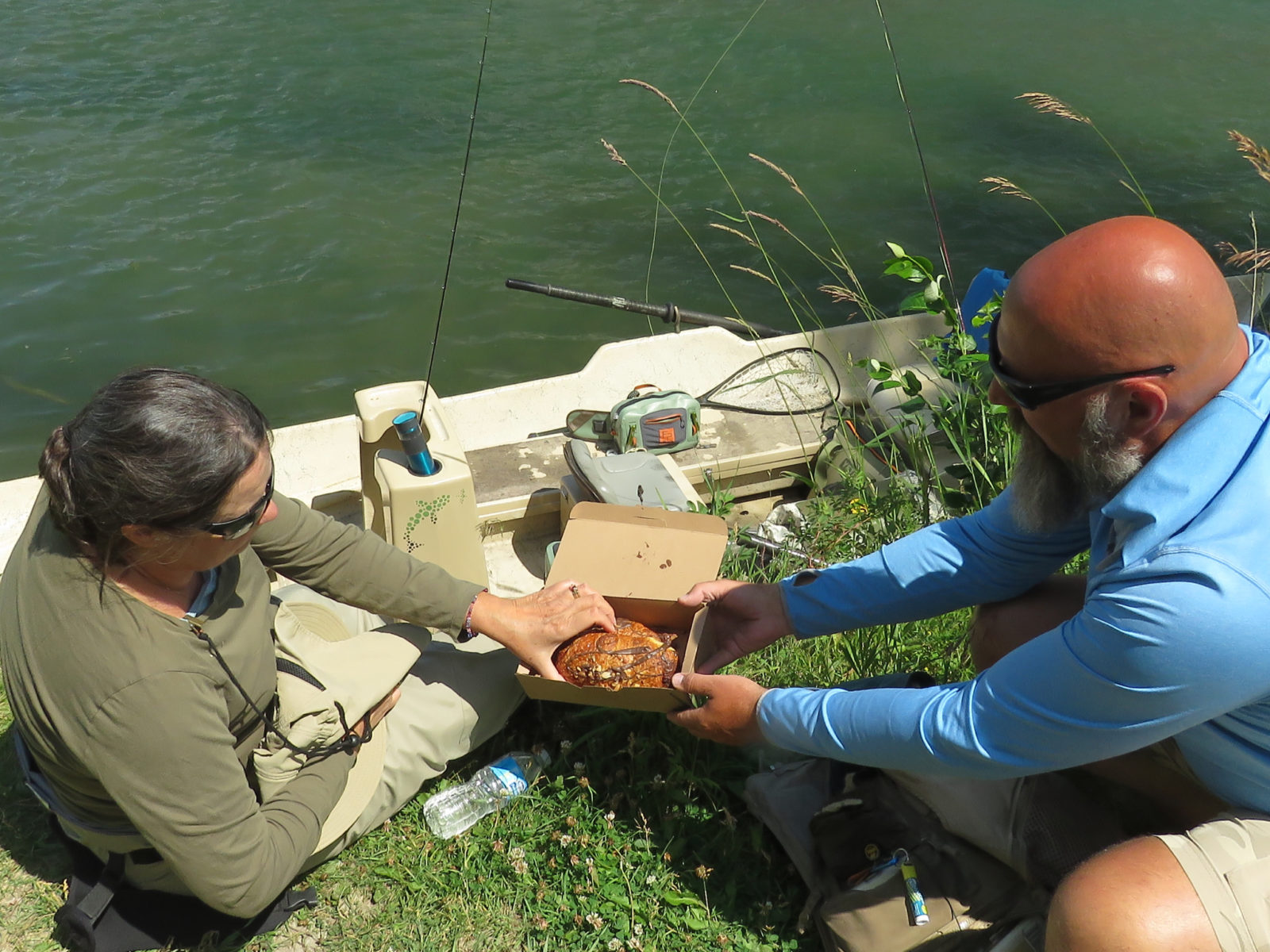
After our shore lunch, which Troy provided from the Italian Market next door to the fly shop, we headed to a spot on the opposite bank where he said fish often lay in deeper water just off a pebbly ledge. It was Denise’s turn to have a go.
“There! See it?” Troy said excitedly, pointing to a spot just off the shallows. “I know I saw a fish there. Cast to it!”
Denise did but to no avail. That’s why it’s ‘fishing,’ not ‘catching,’ as the old saw goes.
Rowing back across the river, Troy brought us to another steep bank. While he got Denise fishing again, I watched the surface and up came another fish, uncharacteristically farther out. It was hungry and active. I didn’t need prompting, but Troy said, “Cast to it!”
Twice my fly floated over, or at least near, where the fish rose. The second time, the hopper swirled and twirled in the current. In an instant, both Troy and I saw the telltale shadow of a fish rushing to the surface.
A small splash and my fly disappears. Set the hook! My fly rod’s tip bent and vibrated. It was on. And the big Bow River brown, shaking its head, again bore downstream, using the current as an ally, trying to shed my hook. This time, however, it stuck. As the fish made several runs and I slowly brought it to the boat, Troy dropped the anchor and jumped into the thigh-deep water to net it.
It was a beautiful brown, at least 18 to maybe 20 inches, and still lively after its fight. Troy scooped it up with the neoprene net he uses that won’t harm the fish, and held it for a moment so Denise could get our “photo fish” shot, before slowly returning the trout to its river home. It quickly disappeared into the Bow’s semi-transparent water. That fish made our day.
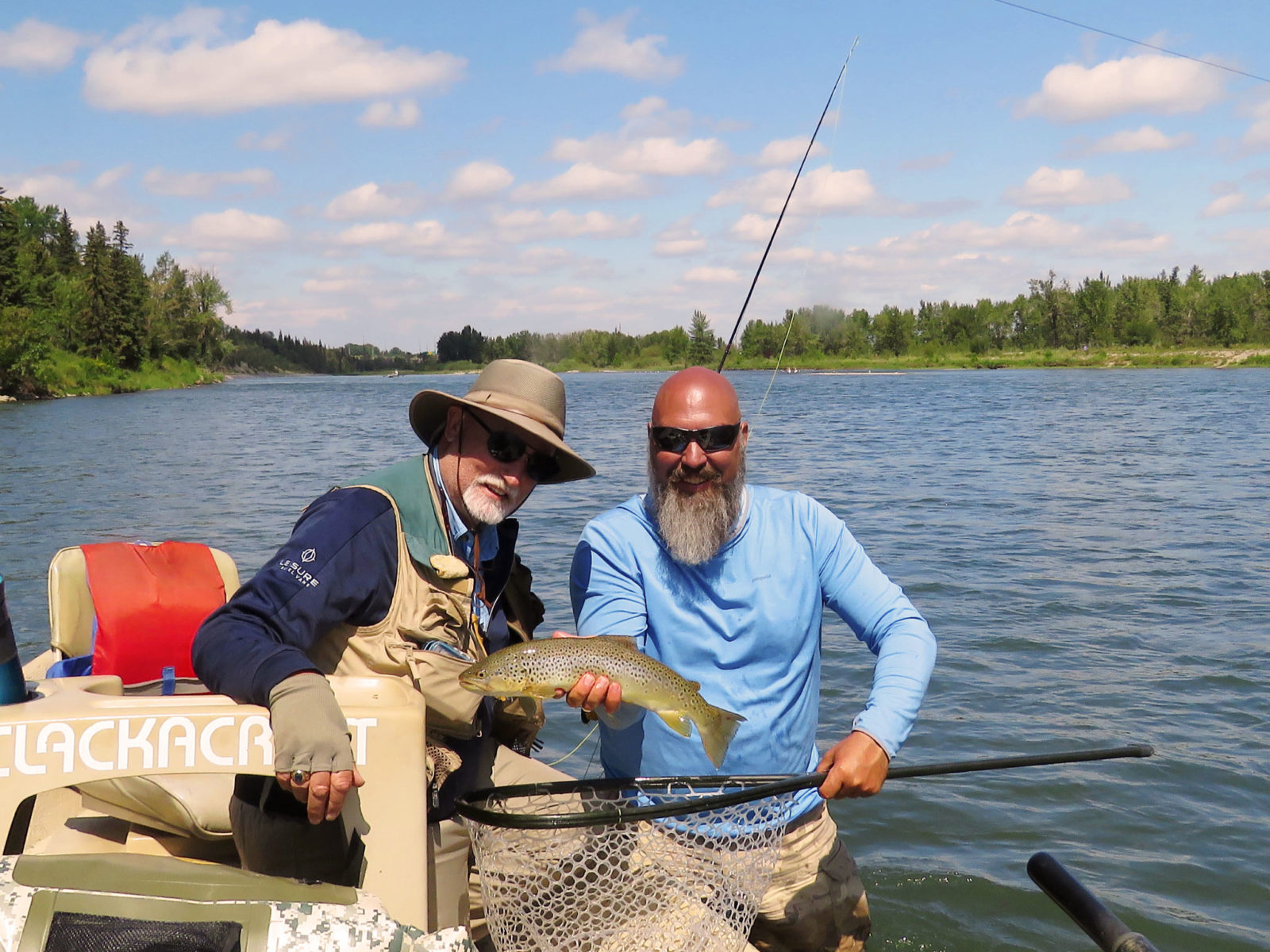
While Denise hooked at least one, she never landed a fish that day. Despite only landing one Bow resident between us, the trip couldn’t have been better. I checked another box and spent a day on a world-famous trout stream, getting off the river just before a storm rolled in from the Rockies.
Our next destination was to the west, where we headed into Banff National Park to continue our 9-week journey to the Pacific. Stay tuned for that installment!
The essentials
Troy Langelaar provides the proper fishing rod and flies, and lunch from a market in the shopping center where you’ll meet. If Langelaar is already reserved, the shop will connect you with an equally knowledgeable guide. Purchase your Alberta fishing license at the shop the day before your float.
Waders and rain parka
You don’t need them, but they help keep you dry if rain threatens or when you get out of the boat to use a park restroom or have lunch.
Sunscreen and sun protection
You will be on the water, in a boat, for 7 to 10 hours, and you’re in the high plains. I wear fingerless sun gloves and a wide-brim hat to protect against sun damage, as well as a sleeved shirt. Always wear sunglasses. They help you see the flies and the fish, and protect your eyes from errant casts by either you or your fishing partner.
Snacks and water
Chances are your guide will have both, but bring it along if you wish.
Cost
Plan for around $375 USD for two people.
Tip money
Either U.S. or Canadian currency is good. Count on up to 20 percent depending on your trip and success.
Where To Stay
We picked the Lions Club Campground on a Bow tributary in Okotoks, south of Calgary and a short drive from the fly shop. The campsite itself was fine. We even met a precursor of our Unity, a Triple-E RV that its owner said was 25 years old and still going strong.

But be sure to have plenty of Canadian cash if you want to use the laundromat and the shower here. The store gave change, but at even exchange, not at the 30 percent premium that was available at the time. Grr.
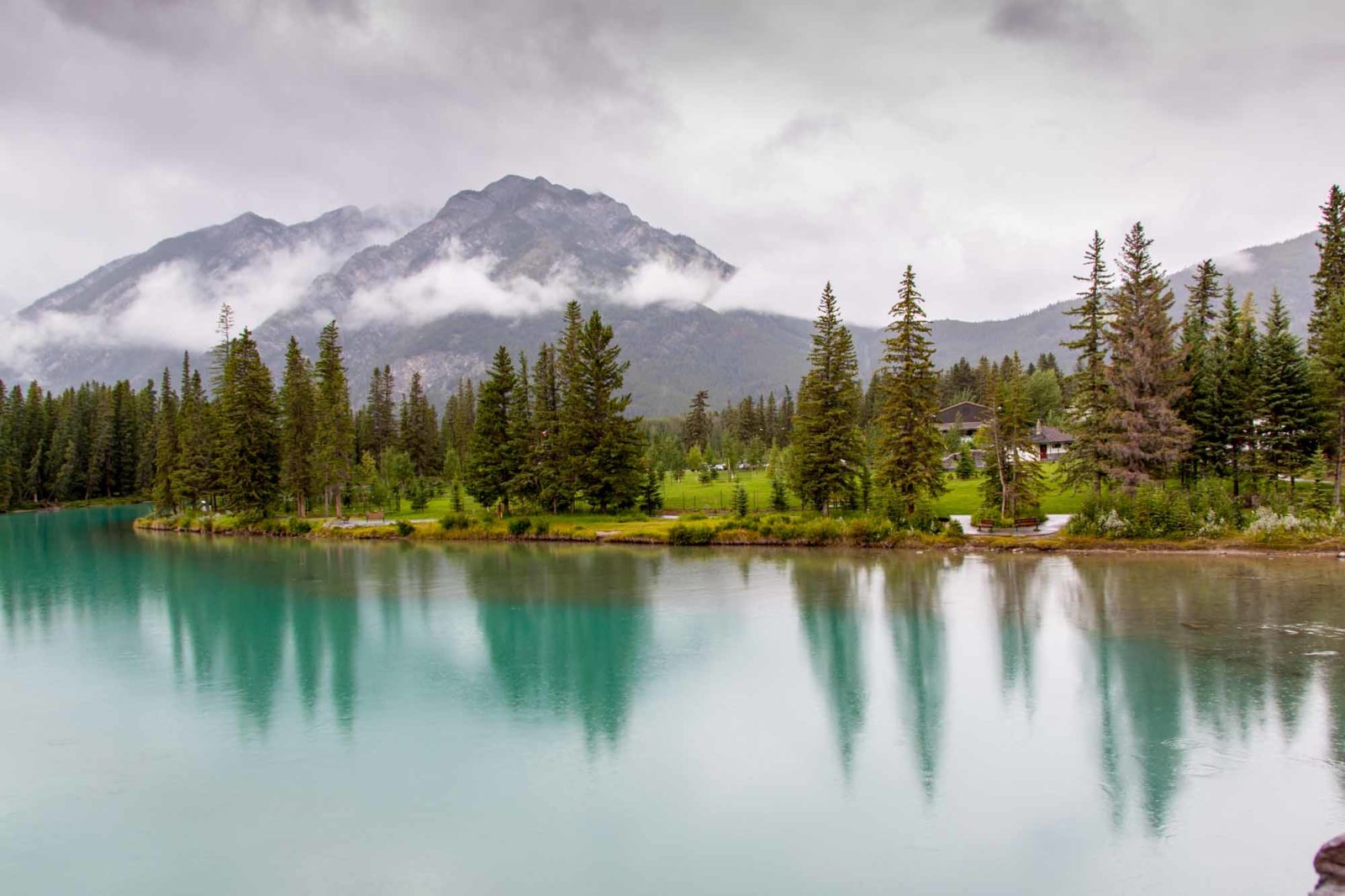
If heading to Banff and Lake Louise area, you can try to fish the Bow near its headwaters, where it can be waded. Out Fly Fishing and other guide services will even take you on wading trips in other stretches, or float the upper Bow depending on the season. But, as we found, if you try it yourself in the park, you may have company. Sections of trees along the river at the hard-sided campground in Lake Louise that we’ll detail in our next installment were decorated with red tape, and not for a holiday – seems that a grizzly family was frequenting the area. A good reason NOT to fish here. We took the hint.


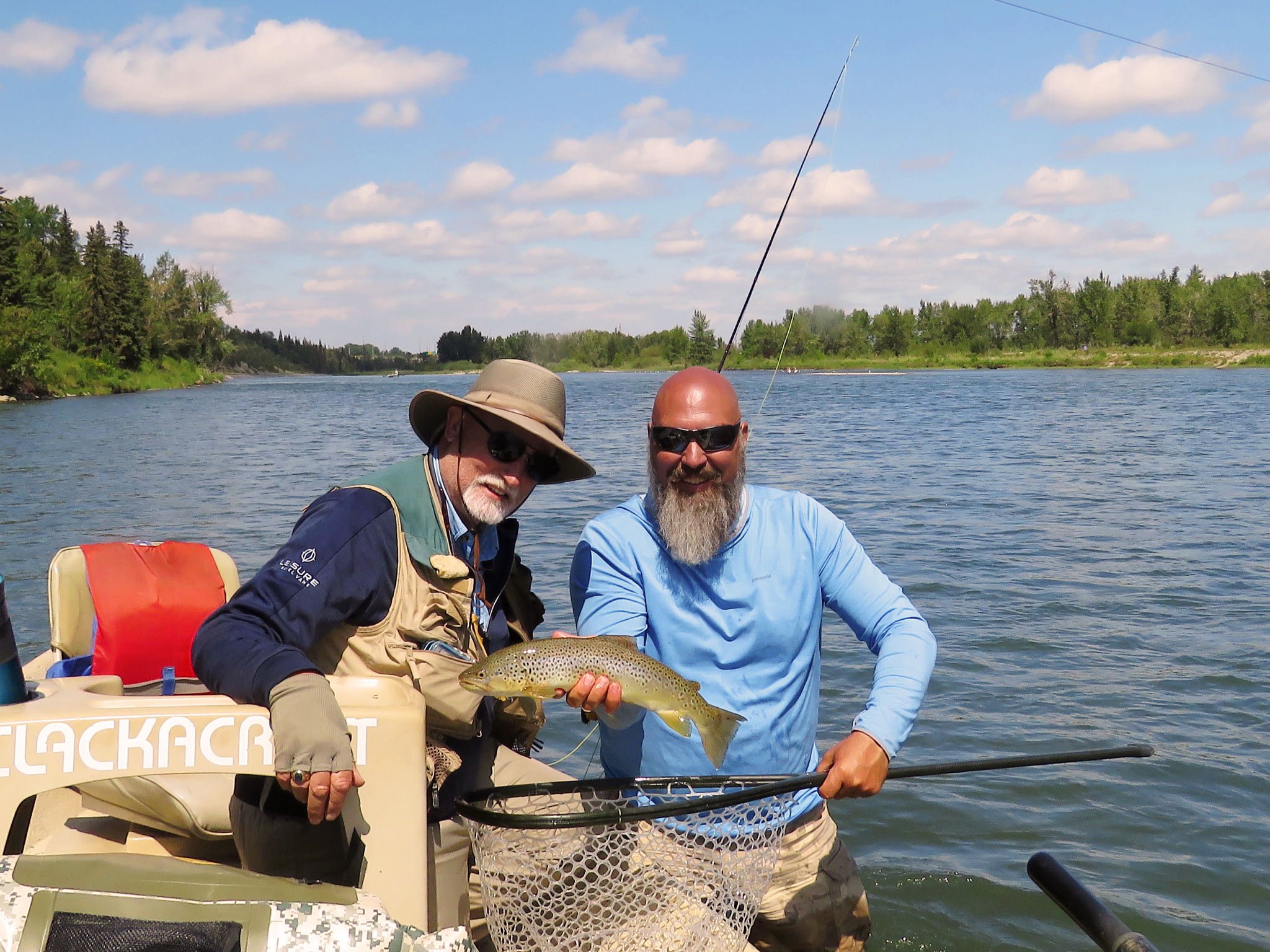

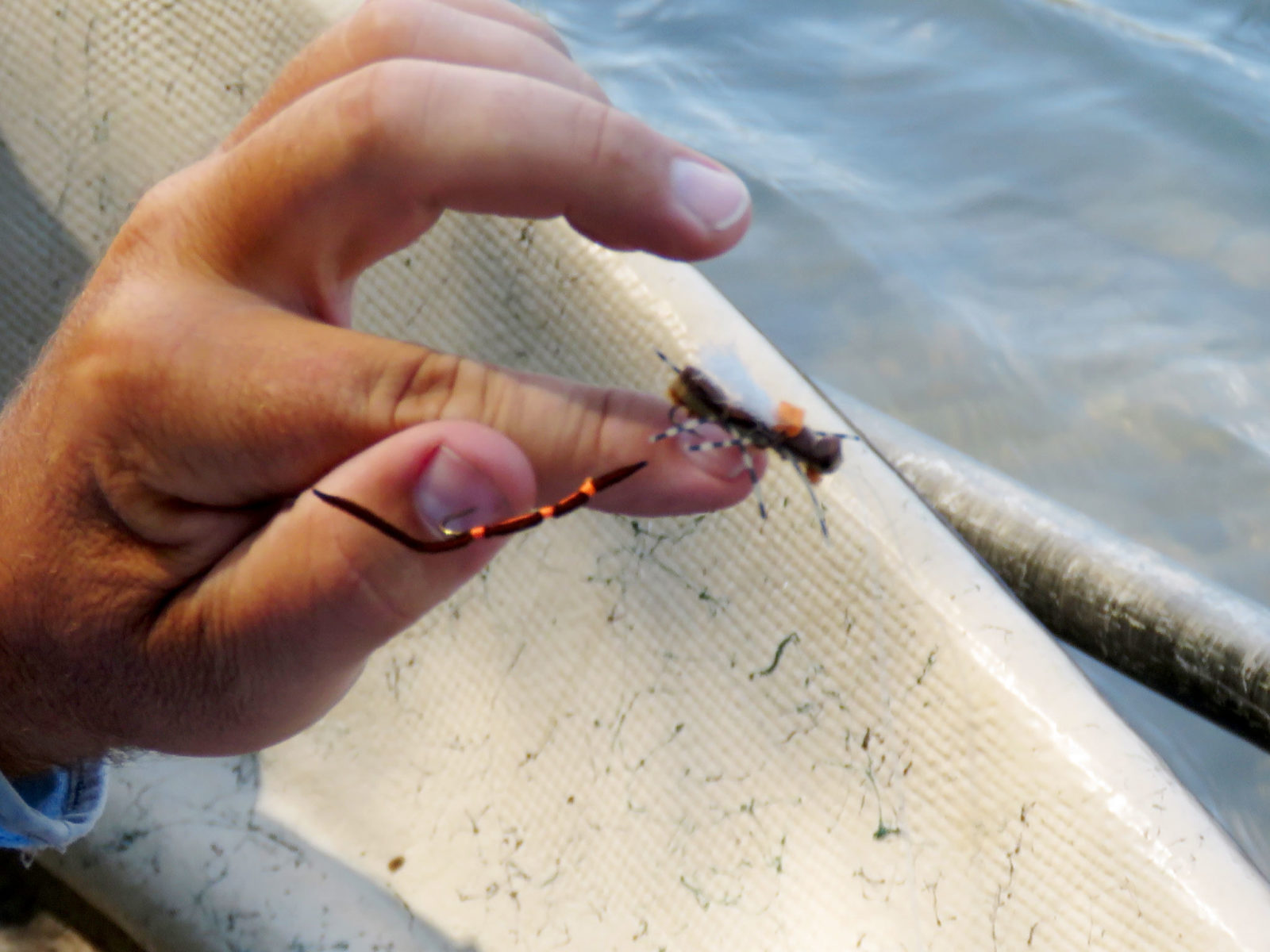
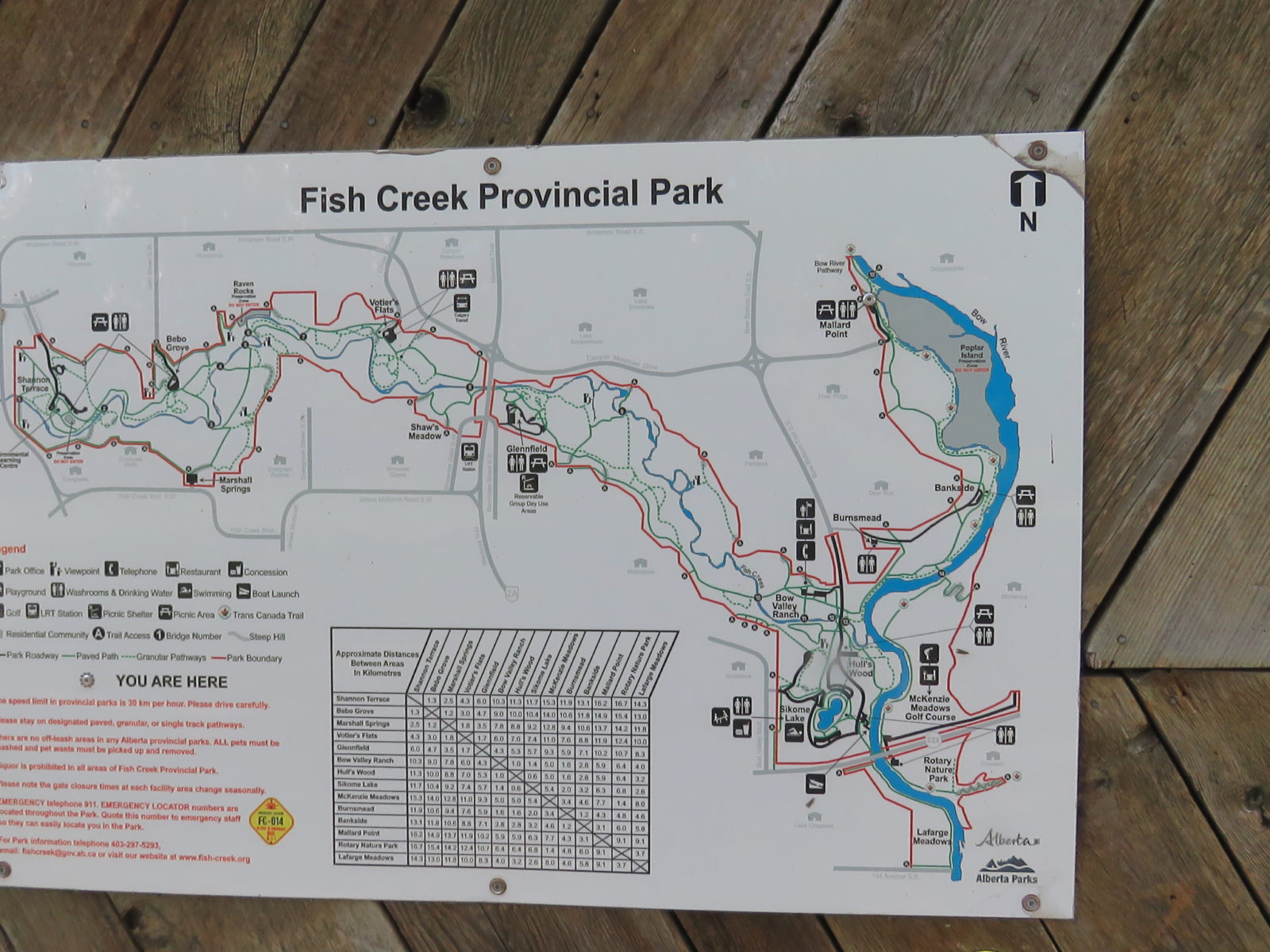
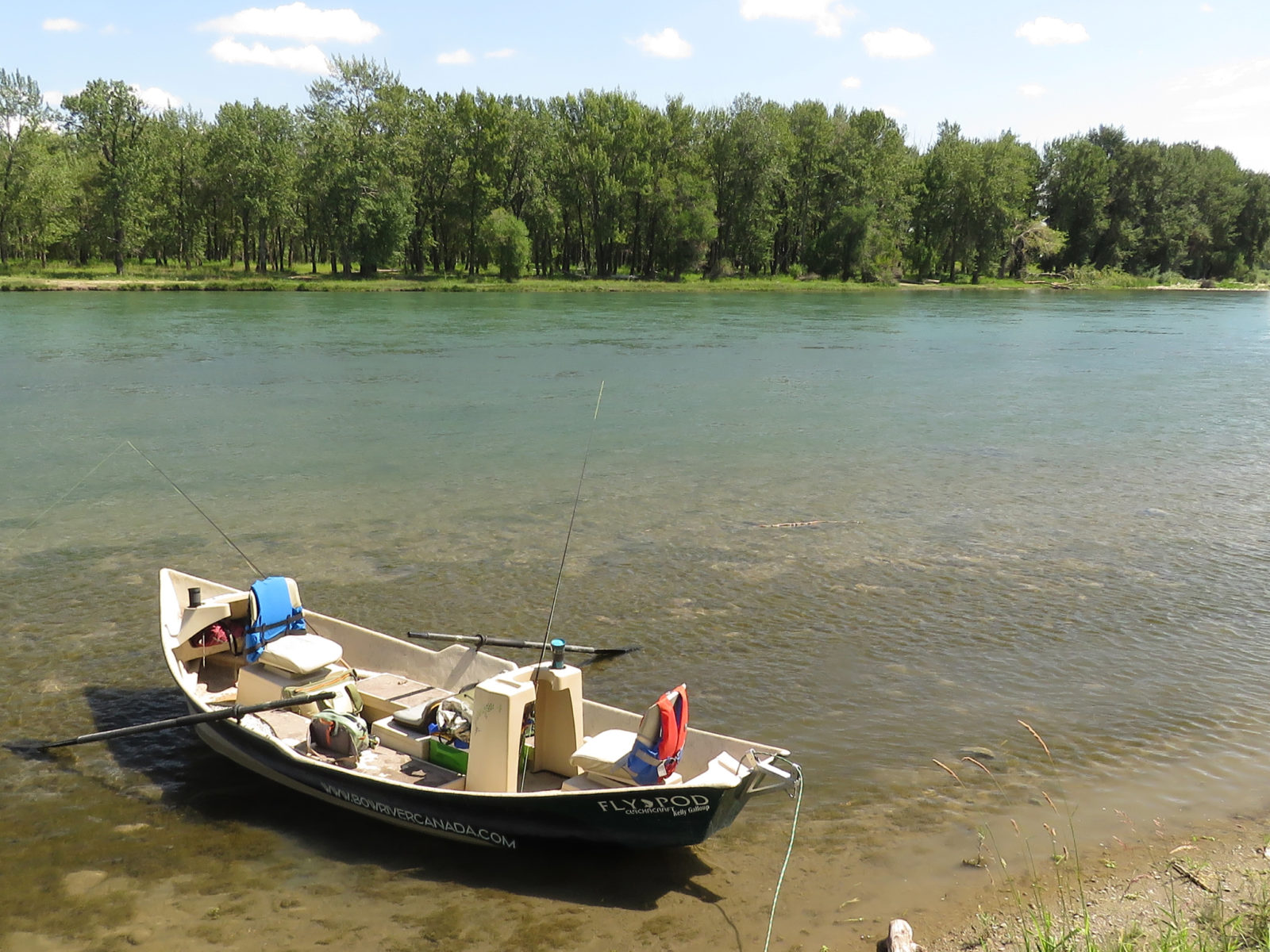


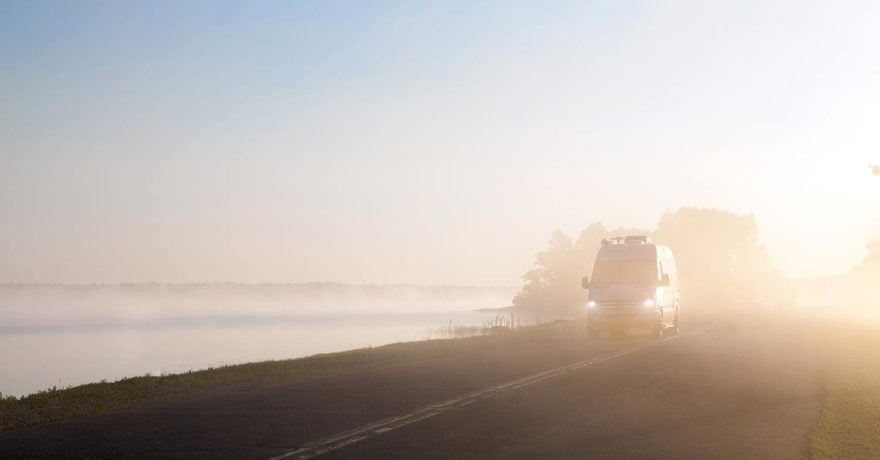
Comments